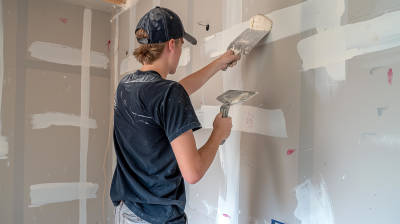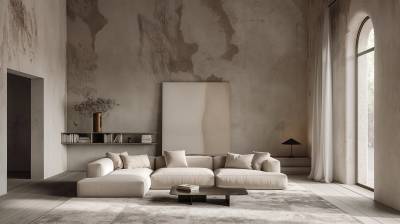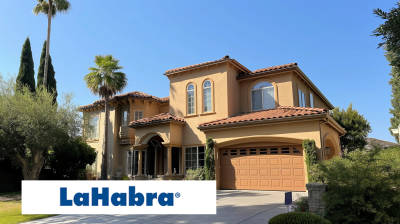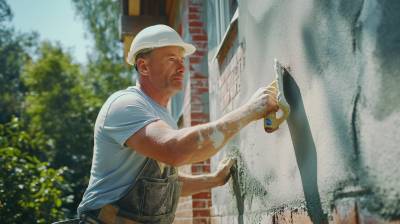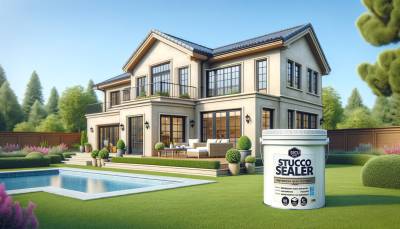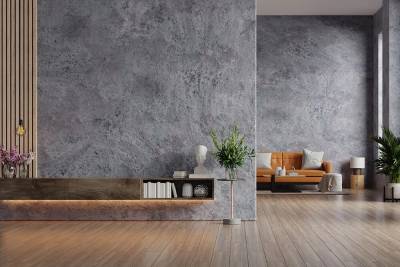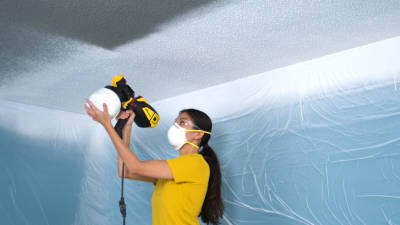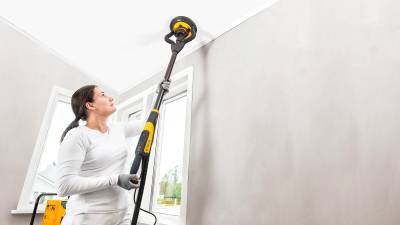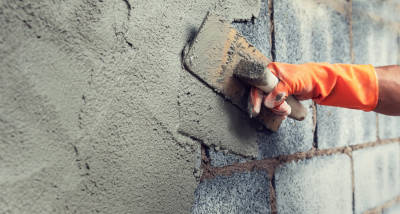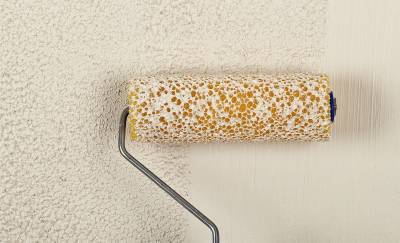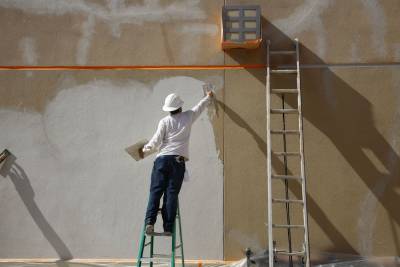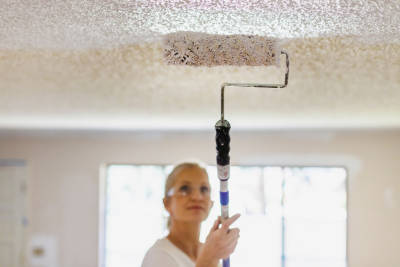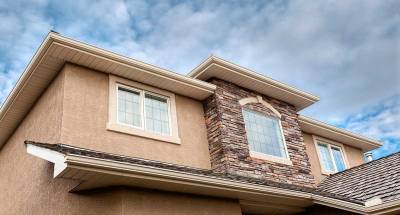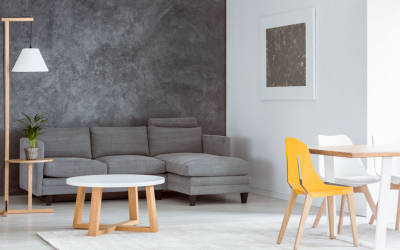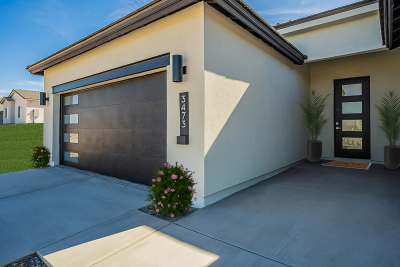If you're looking to add a uniquely personal touch to your home or workspace, consider exploring different wall texture types. By adding textural elements, you can bring a room to life, creating depth, interest, and personality. This guide will take you through the top wall textures available, and give you insights on how to texture a wall like a pro.
An Overview of Wall Texture Types
Wall textures come in a wide range of options, with each expressing a different aesthetic and mood. Below are some of the top wall texture types and their characteristics:
Knockdown Texture
A knockdown texture is a popular choice that offers a mottled, somewhat smooth appearance. The wall is first sprayed with small patches of plaster or drywall compound, then 'knocked down' with a trowel to achieve subtle peaks and troughs. It's an ideal choice for hiding any imperfections on your wall surfaces.
Orange Peel Texture
As the name suggests, an orange peel texture resembles the skin of an orange. It entails spraying a mix of drywall compound and water onto the wall, and once dried, it forms a pleasing bumpy surface. Preferred by many, it gives an attractive and modern look to any space.
Popcorn Texture
Popcorn texture, also known as acoustic ceiling texture, is marked by its unique popcorn-like appearance. It's best suited to ceilings where it not only adds visual appeal, but also dampens sound and obscures any surface flaws.
Learning How to Texture a Wall Like a Pro
Mapping the methods on how to texture a wall effectively is key if you want to achieve a professional finish. Here is a simple guide that you can follow:
Preparation
Start by tidying up the wall; remove any wallpaper, fill in cracks with joint compound, and level any uneven areas. Then, apply a primer to ensure the texture adheres properly.
Choose Your Texture
Decide on a texture that best suits your wall and personal aesthetics. You might prefer a subtle effect like the knockdown texture, or perhaps something more dramatic like the popcorn texture.
Application
Depending on your chosen texture, you'll need to use the right tools - these can range from a paint roller, a compressor and hopper gun, or a trowel. Follow the recommended techniques for your chosen texture for the best outcome.
Finishing Up
Once your texture is applied and dried, you can paint the wall with your chosen color. Remember to clean up your workspace to keep it safe and tidy.
Benefits of Wall Texturing
Besides their aesthetic appeal, a textured wall is practical and beneficial in many ways. It garners a feeling of warmth and depth in a room and can conveniently hide any imperfections or stains on your wall.
Ultimately, texturing your walls could be a rewarding DIY project that greatly enhances the feel and look of your home or office. Armed with knowledge about different wall texture types and how to texture a wall professionally, you can transform a dull environment into one full of character and style.
Wall texture not only enhances the aesthetic appeal of your space but also conceals imperfections. This article aims to answer common questions relating to wall texture, the various types available, how to texture walls and associated topics.
What is Wall Texture?
Wall texture refers to the visual and tactile quality of a surface, achieved by various texturing techniques. It can be manipulated to add depth, nuance, and visual interest to a room. The texture enhances the decorative aspect of the walls and provides a unique aesthetic that significantly contributes to the feel and look of a space.
What are the Different Wall Texture Types?
There are several versatile wall texture types, each bringing a unique visual aesthetic. Here are a few:
- Orange Peel: This drywall texture type results from spraying wall paint onto the wall in a pattern similar to the peel of an orange.
- Knockdown: This involves spraying a layer of texture onto the wall, then smoothing it out with a drywall knife to achieve a subtly bumpy finish.
- Popcorn: A popular choice for ceilings, 'popcorn' texture bears a resemblance to cottage cheese and serves to absorb sound.
- Slap Brush: This texture is achieved by 'slapping' the wall with a paintbrush; the result is a wild, stucco-like texture.
- Sand Swirl: Often created using a mixture of sand and mud, this texture involves swirling a brush in a pattern for a sand-textured finish.
How Do You Texture a Wall?
Changing the texture of your wall can be a DIY project or done by professionals. Here are general steps on how you can texture a wall:
- Prep the Wall: Clean the wall to get rid of dust and dirt. Any cracks and holes should be filled and smoothed out.
- Prime the Wall: Apply a coat of primer to help the texture stick and boost its durability.
- Apply the Texture: Depending on your chosen texture type, you would use a roller, brush or sprayer. Be consistent with your pattern or motion.
- Dry and Paint: Allow the texture to dry before applying paint. You might need to use a thicker nap roller due to the texture’s depth.
Can You Add Texture to Painted Walls?
Yes, it's possible. However, the previously painted wall may require prepping before a new texture can be applied. Sanding the wall to degloss the painted surface will help the new texture adhere better.
How Long Does it Take to Texture a Wall?
The time it takes to texture a wall can significantly vary based on the wall's size and the specific type of texture being implemented. As a general rule, expect to spend a few hours prepping the wall, then one to two days applying the texture and allowing it to dry.
Is Wall Texture in Style?
Wall texture is indeed a style that has witnessed various trends over the years. Currently, a minimalist aesthetic with flat, smooth walls is trending in interior design. Nevertheless, texturing walls remains a praised design choice for its ability to add depth and character to any space.
Because of the design element it adds to a room, wall texture can greatly influence the overall ambiance of a space. It’s important to consider your personal preferences and the desired vibe of the room when deciding to texture your walls.
Summary
When it comes to giving any space a unique appeal, wall texture definitely makes a huge difference. You can either go for a smooth look or choose from various wall texture types such as popcorn, knockdown, orange peel, or sand swirl. No matter what style you prefer, these textures will surely add depth, interest, and personality to your walls.
Understanding wall texture types is key to achieving the look you desire for your home or business. Whether you prefer the subtlety of a sand swirl or the boldness of a popcorn texture, there's a wall texture out there that fits your aesthetic needs. Remember, different textures will require different tools and techniques, so choose wisely!
Finally, how to texture a wall is also an important skill to learn. Using the right tools, you can create textures that can dramatically transform your space. From the application of joint compound to the skillful use of texturing tools, learning how to texture a wall can be a fun DIY project or even a professional endeavor. As the final touch to any interior design, mastering wall texturing is definitely a skill worth having.
About Atlas Stucco
Welcome to Atlas Stucco, Sacramento's premier stucco contractor! We're a locally owned company that has been proudly serving the dynamic city of Sacramento, California and its surrounding areas for years. Our team is filled with highly trained professionals who handle each project with utmost care, precision, and efficiency. Whether you're looking for residential or commercial stucco services, we've got you covered. At Atlas Stucco, we believe in delivering only the best quality work, on time and within budget. We invite you to explore our site to learn more about us and why we're the region's trusted stucco experts.
Tags: Wall Texture, Texture Types, DIY Wall Texturing,



